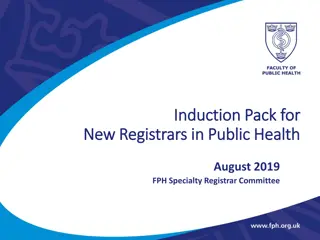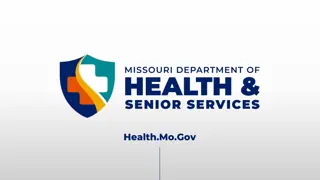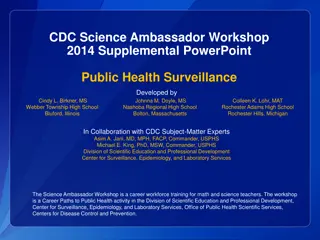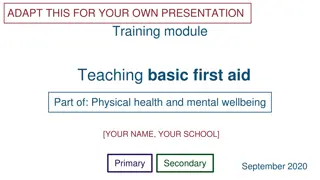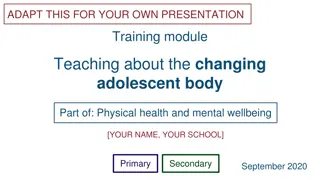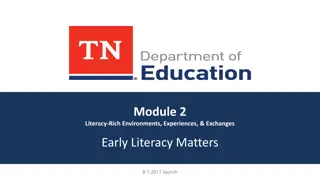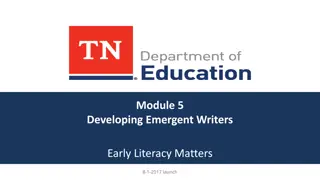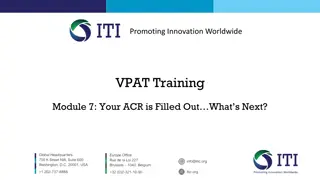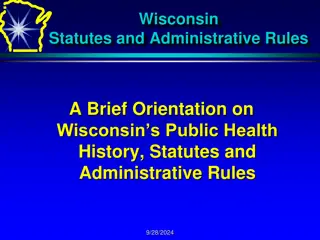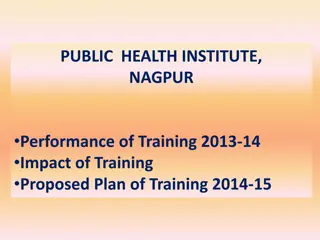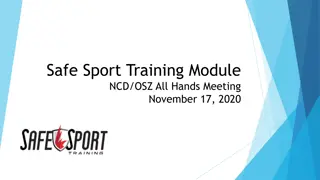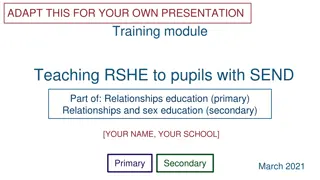Instructional Training for Public Health Professionals Module 4
This module focuses on enhancing instructional and delivery skills for public health professionals. Participants will learn to identify factors for effective delivery, recognize positive presentation skills, and describe tools used in instructional settings. Topics covered include instructor aptitude, subject matter expertise, attire, posture, facial expressions, voice, and nonverbal communication. Activities include demonstrating mannerisms and traits, emphasizing good posture and facial expressions, and improving voice enunciation and projection.
Download Presentation

Please find below an Image/Link to download the presentation.
The content on the website is provided AS IS for your information and personal use only. It may not be sold, licensed, or shared on other websites without obtaining consent from the author. Download presentation by click this link. If you encounter any issues during the download, it is possible that the publisher has removed the file from their server.
E N D
Presentation Transcript
Instructional Training for the Public Health Professional INSTRUCTION AND DELIVERY SKILLS Module 4
Module Objectives Module Objectives By the end of this module, participants will be able to identify the factors that go into an effective delivery. Recognize the personal attributes of an effective instructor Identify positive presentation skills Describe tools used in the instructional setting 4-2 INSTRUCTIONAL TRAINING FOR THE PUBLIC HEALTH PROFESSIONAL
An instructor will be defined by their aptitude 4-3 INSTRUCTIONAL TRAINING FOR THE PUBLIC HEALTH PROFESSIONAL
Aptitude Subject Matter Expertise Attire Posture Facial Expressions Voice Movement 4-4 INSTRUCTIONAL TRAINING FOR THE PUBLIC HEALTH PROFESSIONAL
Subject Matter Expertise Valued by the Adult Learner Introduction should explain What s in it for Me? Don t create subordinate relationship INSTRUCTIONAL TRAINING FOR THE PUBLIC HEALTH PROFESSIONAL 4-5
Attire Professional No Rattling Cell Phones 4-6 INSTRUCTIONAL TRAINING FOR THE PUBLIC HEALTH PROFESSIONAL
Willing participants will be provided a card with the slide title and a mannerism or trait to be expressed. At the appropriate point during the instruction, participants will be called upon to demonstrate. Activity This is a whole class activity that will involve the next three slides. 4-7 INSTRUCTIONAL TRAINING FOR THE PUBLIC HEALTH PROFESSIONAL
Nonverbal Communication Good Posture Communicate Confidence Don t Touch! Power, Not Powerful Engagement Facial Expressions 4-8 INSTRUCTIONAL TRAINING FOR THE PUBLIC HEALTH PROFESSIONAL
Voice Enunciation Projection Modulation Cadence Pause 4-9 INSTRUCTIONAL TRAINING FOR THE PUBLIC HEALTH PROFESSIONAL
Movement Don t be a tree Gestures Synchronize movement Minimize speaking while moving 4-10 INSTRUCTIONAL TRAINING FOR THE PUBLIC HEALTH PROFESSIONAL
What Intimidates You? Raising Your Voice Glaring Looming Putting someone on the spot Harsh Gestures 4-11 INSTRUCTIONAL TRAINING FOR THE PUBLIC HEALTH PROFESSIONAL
Fun and Humor More learning occurs when the instructor is clearly and visibly enjoying instruction Humor May reduce anxiety and stress No politics Don t be overtly self-deprecating If you are not funny, that s okay Nothing ethnical or sexual 4-12 INSTRUCTIONAL TRAINING FOR THE PUBLIC HEALTH PROFESSIONAL
Questioning by the Instructor Challenge Engage Assess Understanding Remember and Understand Content Analyze, Apply, Evaluate and Create Process 4-13 INSTRUCTIONAL TRAINING FOR THE PUBLIC HEALTH PROFESSIONAL
Questioning by the Participant Give them permission if necessary Take questions throughout the session check for learning Don t patronize or intimidate How do you handle the question you can t answer? How do you stop questioning when pressed for time? 4-14 INSTRUCTIONAL TRAINING FOR THE PUBLIC HEALTH PROFESSIONAL
Find your Story : Use any of the listed concepts (or one of your own choosing) and build your personal story to reinforce the intended learning outcome: Importance of collecting a stool specimen Product tracing of a recalled food Importance of finding additional cases Preserving clinical samples correctly Environmental assessment leading to positive findings Using the proper form during an epidemiologic investigation Taking appropriate legal action based on investigation findings Activity Stories can be a powerful tool to reinforce subject matter. Telling your own story may reduce your fear of presenting as you become comfortable with the subject matter. Be prepared to share the story. Others 4-15 INSTRUCTIONAL TRAINING FOR THE PUBLIC HEALTH PROFESSIONAL
Instructional Tools Supports the Learning Process Easel Pads and White Boards Presentation Slides Handouts and Props Audio and video 4-16 INSTRUCTIONAL TRAINING FOR THE PUBLIC HEALTH PROFESSIONAL
The Presentation Slide Prompt , not a Prop Shy away from continued slide Design and Background Don t Overwh elm 1-6-6 Rule Minimize Reading from the Slide Balance Set the Computer Screen so that it can be seen by the instructor 30 90 Seconds per slide Key Concep ts Clear and Concise Presntation Slides Support Good Instruction 4-17 INSTRUCTIONAL TRAINING FOR THE PUBLIC HEALTH PROFESSIONAL
Easel Pads and White Boards The Blank Canvas Lists and parking lot items Write in large block font whenever possible Color is fine but make sure you have good contrast Stand to the side, preferable on the left side Don t destroy walls with the wrong tape or markers 4-18 INSTRUCTIONAL TRAINING FOR THE PUBLIC HEALTH PROFESSIONAL
Audio and Video Don t overuse as it is a passive media Short and high-quality Demonstrate professionalism Have permissions Imbed whenever possible Have a Plan B 4-19 INSTRUCTIONAL TRAINING FOR THE PUBLIC HEALTH PROFESSIONAL
Handouts and Props Handouts must be clear and legible Make sure you have permissions Consider logistics with the use of props Consider a prop a 3-dimentional picture 4-20 INSTRUCTIONAL TRAINING FOR THE PUBLIC HEALTH PROFESSIONAL
I hear and I forget. I see and I remember. I do and I understand -Xunzi (300 - 230 BC) 4-21 INSTRUCTIONAL TRAINING FOR THE PUBLIC HEALTH PROFESSIONAL
Summary Recognize the personal attributes of an effective instructor Identify positive presentation skills Describe tools used in the instructional setting 4-22 INSTRUCTIONAL TRAINING FOR THE PUBLIC HEALTH PROFESSIONAL
Coming Up Next Challenges to Effective Instruction 4-23 INSTRUCTIONAL TRAINING FOR THE PUBLIC HEALTH PROFESSIONAL
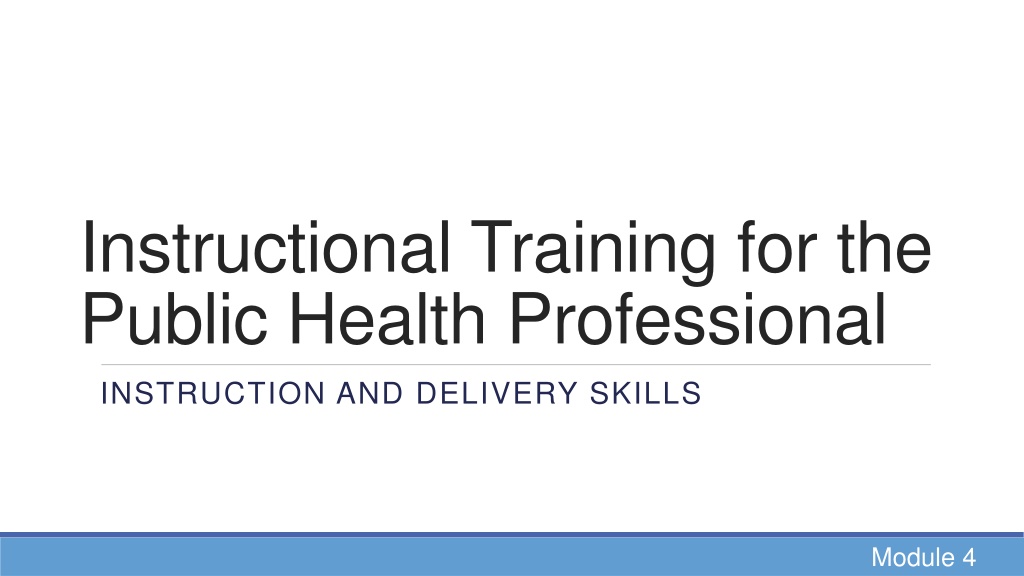

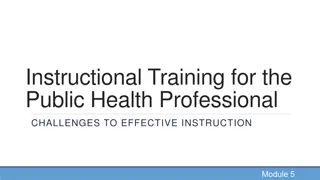
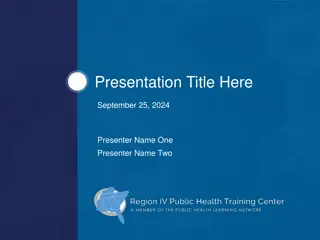
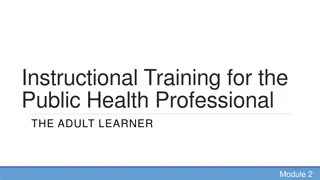



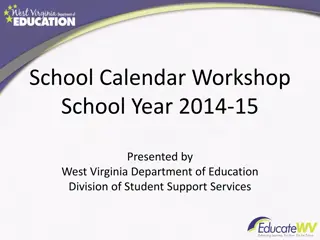

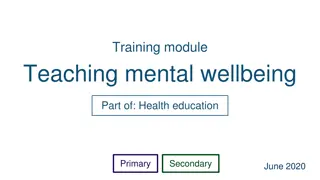

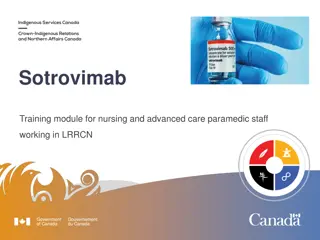


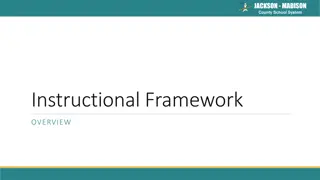
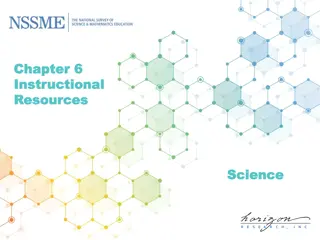

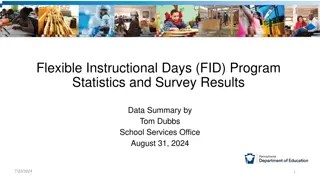
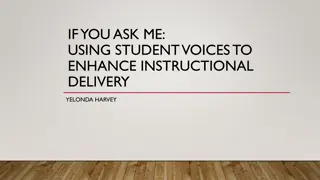
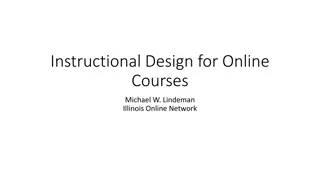
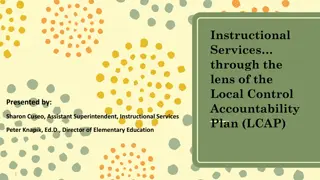

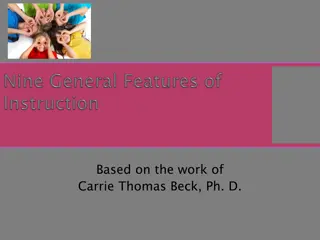
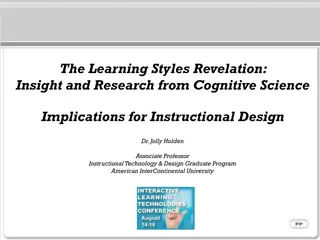
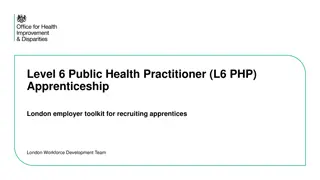
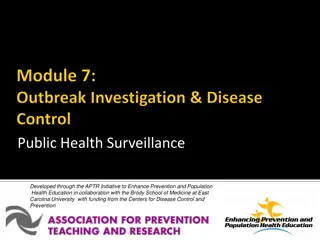
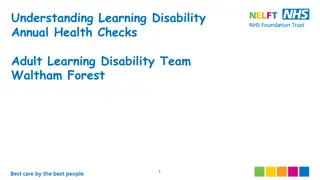

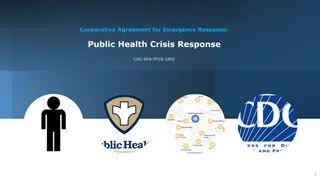
![Teaching Health and Prevention at [Your School]: Training Module for Physical Health and Mental Wellbeing](/thumb/167013/teaching-health-and-prevention-at-your-school-training-module-for-physical-health-and-mental-wellbeing.jpg)
